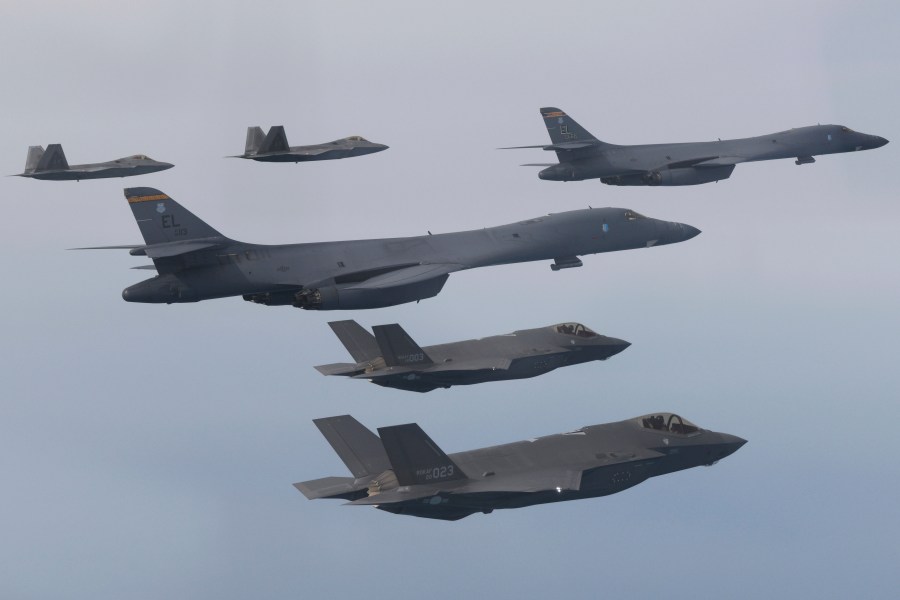Just In News | The Hill
Demand signals are growing for improved U.S. theater nuclear options and missile defenses in the Western Pacific. In the runup to President Biden’s recent summit with the Pacific Islands, Palau’s president called for a permanent deployment of air and missile defense systems. This followed closely on the heels of yet another signal of South Korea’s creeping interest in nuclear weapons. Taken together, this is a worrying — and unfortunately persistent — sign of rising doubt in the American extended deterrent. The situation, if left unaddressed, risks deterrence failure and the total collapse of the regional nonproliferation regime.
To maintain a credible forward position in the Western Pacific, the United States requires a more comprehensive theater nuclear and missile defense posture to withstand nuclear coercion. Due to sluggish military spending and technological limits, a “leak-proof” defensive shield against heavy and sustained strategic missile attack is unlikely. Furthermore, given the dramatic growth in China’s theater nuclear capability, achieving escalation dominance at that level will remain out of reach in the medium term.
Nonetheless, the United States can no longer rely on the current mix of theater nuclear options and missile defenses. Theater nuclear power now depends on dual-capable aircraft lacking the reliability, survivability, and endurance to credibly hold at risk valued targets on the Chinese mainland. These forward-deployed strike systems and weapons facilities, however, are currently limited to Europe. Regardless, multirole aircraft are vulnerable on runways, depend on in-flight refueling tankers, and must penetrate enemy air defenses to deliver gravity bombs on target. This deterrence gap is aggravated by the regional missile defense architecture, which must be improved, expanded and more deeply integrated with regional partners.
A harmonized offensive-defensive posture is a deterrence prerequisite for three reasons.
First, to reassure nervous partners and entice anxious fence-sitters, the United States must demonstrate a capability to sustain conventional operations in peacetime and open conflict. The Ukraine war has demonstrated the potential for nuclear coercion to hamstring alliance decision-making — even among tightly integrated NATO partners not directly fighting. In the Western Pacific, where the United States relies on looser arrangements, this issue is compounded. Unless U.S. forces have the staying power to conduct conventional operations in the nuclear shadow, regional partners’ willingness to assist, in any capacity, will erode.
Second, the United States, itself, requires the resolve to withstand theater nuclear coercion. Four times now, President Biden has committed to intervene in a cross-strait conflict — this despite official policy and his administration’s glaring failure to align aspirations with the requisite resources and capabilities. To make credible improvements to regional deterrence, advanced homeland anti-ballistic interceptors will be needed. If the United States lacks self-assurance, how can regional partners be reassured by American security guarantees?
And third, theater employment is the most likely escalation pathway to nuclear warfare. The current regional architecture, however, lacks the capacity and capability to raise the cost of small-scale nuclear use. Here, the United States must lift the threshold for successful limited attack by bolstering its offensive and defensive posture. Nuclear escalation will look more appealing to Beijing if small attacks are cheap. Strengthened regional missile defenses, though inadequate against large and sustained strikes, would force Beijing to reconsider the efficacy of limited use.
Furthermore, to send the cost of nuclear escalation soaring, U.S. missile defenses should be complemented by reliable and diversified theater nuclear options. If Beijing recognizes that limited nuclear attack risks failure and a prompt response in kind, nuclear escalation could be forestalled. Broader delivery options are urgently needed to strengthen the nuclear-conventional firebreak. In the event of a cross-strait crisis ranging from intensive gray-zone actions to open warfare, Beijing may employ coercive threats to dissuade U.S. intervention and hold the contest to an intra-strait affair. Chinese military writings have increasingly implied that limited nuclear options may be employed for just such a purpose.
The United States should therefore field a more competitive offensive-defensive posture. To be sure, an impenetrable ballistic missile defense is a fantasy — at least for the foreseeable future. Yet so is the notion of a technological plateau, which overlooks the incredible advances making effective defense against limited attack the new reality. An expanded theater architecture should focus on distributed and layered air and missile defenses, featuring the Lower Tier Air and Missile Defense Sensor, the high-end PATRIOT and THAAD systems, and Aegis Ashore. Since active defenses are no panacea, base hardening will be required to ride out more ponderous attacks.
Such a comprehensive posture would close gaps and seams in a vast maritime expanse. Guam’s defensive architecture is slowly headed in the right direction and could serve as a model for other critical nodes. But more urgency and resources are required.
Regarding the offensive component, escalation dominance at the theater nuclear level is unlikely. The United States, however, does not need to match China quantitatively. It just needs a wider range of strike options, delivered by more reliable and survivable systems. This mission profile demands the nuclear-armed submarine-launched cruise missile — unwanted by the Biden administration but lauded by military officials and, most recently, the acting chief of naval operations.
What dual-capable fighter aircraft lack, the submarine-launched system has in spades. The SLCM-N would help close the assurance gap with regional partners, as Japanese officials considered its retired predecessor “the only credible deterrent to the Chinese and Russians.” SLCM-N not only enhances survivability, penetrability and endurance as an undersea launcher, it also provides a hedge against technical issues with the low-yield Trident II D-5 and its follow-on launcher. Strike aircraft and the SLCM-N, however, would complement each other by opening up the Chinese mainland to multiple threat vectors, complicating PRC defense planning. When the long-range stand-off weapon comes online in 2030, strategic bombers will be armed with a modernized nuclear-armed cruise missile to further aggravate Chinese planners.
As the regional military balance stands, the United States risks the steady erosion of its forward position. If it does not want to be left on the outside looking in, and to preserve the regional nonproliferation regime, a more comprehensive offensive-defensive posture should be fielded.
Kyle Balzer is a Jeane Kirkpatrick Fellow at the American Enterprise Institute, where he focuses on great-power competition, U.S. grand strategy, long-term strategic competition, U.S. nuclear strategy and policy, and arms control.
National Security, Opinion Read More
Author Profile
Latest entries
 HeadlinesOctober 19, 2024Rosie O’Donnell’s daughter Chelsea arrested for child neglect, drug possession
HeadlinesOctober 19, 2024Rosie O’Donnell’s daughter Chelsea arrested for child neglect, drug possession ScienceOctober 19, 2024Social media policies are no match for AI bots
ScienceOctober 19, 2024Social media policies are no match for AI bots HeadlinesOctober 19, 2024Mets survive Game 5 vs. Dodgers to send NLCS back to Los Angeles
HeadlinesOctober 19, 2024Mets survive Game 5 vs. Dodgers to send NLCS back to Los Angeles HeadlinesOctober 19, 2024College admissions officer rails against Trump supporters in social media post: 'Piece of s—'
HeadlinesOctober 19, 2024College admissions officer rails against Trump supporters in social media post: 'Piece of s—'

